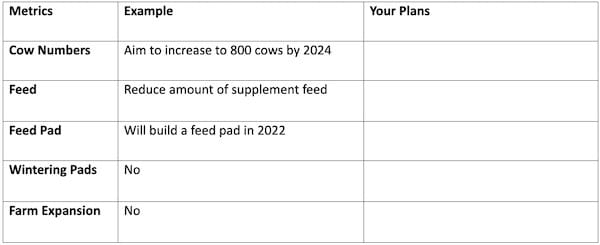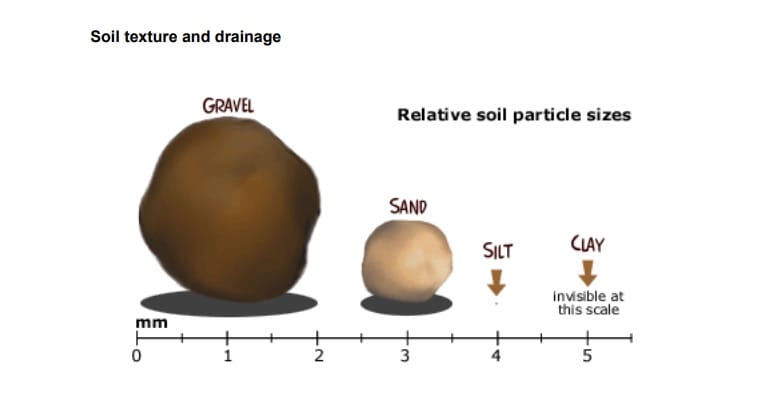Managing your effluents well are a key part of your farm management. Doing it well can help you directly reduce fertilizer costs and increase pasture production.
So let’s explore in detail how to best reuse your farm dairy effluent nutrients on your pasture.
In this article, we’ll cover important points on designing and building effluent systems.
When you install your dairy effluent system, you need to gather the right information and take professional advice. You’re probably going to be using the system for many, many years so it’s important to get it right.
I’m sure all of you are familiar with the different types of effluent systems so, apart from naming them, I’m not going to go into detail about what each one does.
- Travelling irrigator
- Low rate sprinkler with passive separation
- Low rate sprinkler with mechanical separation
- Multiple line low rate sprinkler with passive separation
- Multiple line low rate sprinkler with mechanical separation
- Pivot through mainline with passive separation
- Pivot through mainline with mechanical separation
- Pivot with underslung sprinklers
- Muck spreader
- Contract spreader
Instead, I’ll give you some insight on how to choose the right one for your needs.
Before you give the go-ahead to your designer/supplier to design your effluent system, you need to cover some key areas.
First, write down in detail what you want your system to be able to do.
Secondly, make sure your system is future-proof and fool-proof by writing down where you see your farm in 5 years (cliché, we know, but trust us it really helps!)
Here’s a brief template that might help you get things started.

Another thing to consider is your restrictions.
If you’re a bit hazy about regulations, contact your regional council or dairy advisor who can give you more information on maximum application depth, maximum nutrient loading, maximum application rate, minimum storage requirements, financials and labour.
Your designer/ supplier will require some core information about your farm (and if they don’t ask, give them the information anyway!).
Let them know all about sensitive areas, waterways, design areas, fencing, shelter, energy sources, water supply and any problems that you’ve faced like vandalism.
Also, write down soil and climate information like soil type, drainage, rainfall and wind. Farm management information should cover cows, milking, wash down and labour.
Once you assess the system specification report, review the quote, warranty, delivery times and servicing, you should be able to give your designer the green signal.
Don’t forget to get the necessary manuals and training material that comes along with your new Farm Dairy Effluent (FDE) system.
So now that you know how to pick the best person for the job and give them all the information they need to design the best effluent system for you, let’s deep dive into this topic by starting off on how landscape and rainfall affect effluent management.
Landscape and Rainfall:
Both landscape and climate affect effluent management and cannot be ignored.
The main factors that play a huge role in the success of effluent application are:
- Soil drainage characteristics
- Landscape contours of your farm
- Rainfall and soil moisture deficits

Soil texture affects the speed of water moving down through the soil, and it also affects the water holding capacity of the soil. The water holding capacity and the water content of the soil determine the depth of effluent/water that can be applied before it passes the root zone to groundwater.
Since clay soils have smaller pores, they can hold more water than coarse soils.
Sandy soils have large pores and therefore drain out more water but this also makes it easier for the roots to reach greater depths and extract more water.
Soil and Landscape Classifications:
The below classification system is used to determine an appropriate effluent application depth and effluent storage requirements.
Soil and landscape features can be categorized into one of the five classifications as below:
- C - Sloping land (more than a 7-degree slope) High Risk
- B - Impeded drainage (including imperfectly drained) or low infiltration rate High Risk
- A - Artificial (mole and pipe) drainage or coarse soil structure in topsoil High Risk
- E - Well drained but very light flat land (less than a 7-degree slope) with a very stony sandy layer with 300 mm depth Low Risk
- D - Well-drained flat land (less than a 7-degree slope) Low Risk
In soil and landscape category A and B – the application depth must be less than soil water deficit. Due to improved control over application rate and depth, these soils suit low rate application systems.
In soil and landscape category C – the application depth must be less than soil water deficit and application rate must be lesser than soil infiltration rate. This is the only way to apply effluent without ponding and runoff.
In soil and landscape category D – this is ideal for applying effluent because soil behaviour under drainage is not that big an issue. Both high and low rate application systems will give you good control.
In soil and landscape category E – here the soil drains well but topsoil is thin. Be sure not to apply more than 10 mm of effluent at a time.
Now let’s cover high-risk soils. If your soil is high-risk, effluent irrigation will need expert management.
If your soil ticks even one of the below conditions, then it is a high-risk soil.
- If your land slopes more than 7 degrees
- Artificial drainage
- Hump and hollow land
- Impeded drainage
- Peat soils
- Low infiltration rate soils
- Coarse structured soils
If the soil does not have any of the above characteristics, that’s great! It means you have low-risk soil.
So now that you’re clear on high-risk and low-risk soils, let’s move on to Soil Mapping.
Soil maps provide information for fertilisers, effluent and water irrigation planning, cropping, grazing rotation decisions – all the important stuff basically.
Effluent Application Plans:
If you draw up an effluent application plan, it will help you spot out areas of the farm where you can either go for effluent application or avoid it.
Your staff needs to be aware of your plan.
And do make sure that you’re up to date on any restrictions for applying effluent after rainfall events and if there should be a rest period between applications (a rest period of 10-14 days is usually the norm).
So now I’ll tell you how you can go about making a plan for your effluent application:
- As discussed above, low-risk areas are ideal for effluent application
- High-risk zones include tile drainage areas, very wet soils, free-draining areas with porous subsoil and accessible groundwater
- No-application zones refer to all land within 20m of a drain, waterway or bore or the border of a neighbouring property
If you do have to irrigate a high-risk zone over drains, then you should have runs that go across drains rather than down the length of them.
If soils are wet or too dry, decrease the application depth or defer the application until conditions are suitable for irrigation.
When conditions permit, try to apply effluent to the riskier soils. The low-risk soils should be saved for poor weather conditions.
Effluent Management with Technology:
Advanced technology will equip you with the right information that will help you make the right decisions about effluent, water and nutrient management.
Do check out Pasture.io for more details on tools available for monitoring and recording data about effluent management. Smartphones and apps will help you manage and record tasks useful for effluent management.
Soil moisture sensors provide in-depth know-how on soil moisture deficit determination which in turn will help plan effluent applications – when and how much to irrigate.
You could even establish channels that directly send messages to farm staff on how much effluent they can safely apply in a day.
Pump time controls and pressure sensors help make effluent systems rock solid by preventing effluent spills and protecting equipment.
Sump level alarms will sound off when water reaches a pre-set trigger level. The data from this is linked to a computer/smartphone so the staff have access.
If you depend on theoretical depth to calculate your applied depth, you could make mistakes which could be in breach of your consent conditions. However, if you use a timer, you could manage your effluent application safely in a cost-effective way as sprinkler systems can apply specified depths.
Applicator devices like motion sensors and GPS tracking are also wonderful effluent aids and help calculate all aspects of farm data like irrigation speed, application depth and even nutrient application rates.
This is a vast topic and I can’t wait to tell you all about how you can manage and operate your effluent system, or even upgrade just one part of it.
So watch out for more on this topic coming up very soon!
Happy Farming!
- The Dedicated Team of Pasture.io, 2020-08-25